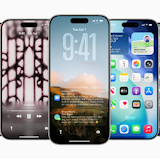
Do you ever look at your Facebook profile and wish that those photos of you didn't exist any more? You know, the ones where you're so drunk that your eyes are just slightly crossed and sweating from all the stupid dancing you were doing in the seconds before the flash fired in your direction.
Not that you wish that night didn't happen. That night was amazing, you can't remember many nights as good. You just wish the public record of the event wasn't so permanent.
This is what Snapchat is all about. You take a photo, send it to someone and ten-seconds later it has disappeared forever. No saving them, no forwarding them on. The app is designed to capture a moment and share it in an impermanent way, like speech.
You connect to friends by either searching for their Snapchat using name, or by allowing the app to match the contacts in your address book with users in its database. You can connect with strangers, but you will need to know their username as a minimum.
Is Snapchat safe?
The whole idea of a photo-sharing app that deletes your photos soon after you take them, does sound suspicious. As much as Snapchat's creators wax lyrical about how "the allure of fleeting messages reminds us about the beauty of friendship," we know what is really going on. You want the photos to delete because you are taking photos of things that you don't want shared, aka you without your clothes on.
If this is your goal, Snapchat does seem like a good way to go about it. The app doesn't share a user's personal information, not even an email address, and it does delete the photos. A note on the Snapchat blog even says that the photos are not viewed by Snapchat staff on their servers and never saved by the company after they are viewed by the recipient.
None of these protections will spare you from having the person screenshot the pic you've sent, though. All smartphones can save an image of what is on screen with a simple combination of buttons being pressed, and Snapchat can't stop this. The best that it can do to prevent screenshots is telling the person who sent the photo that a screenshot was taken, which may save you from sending that friend another photo, but won't do much about the one they have kept.
There have also been plenty of reports about savvy phone owners browsing in the hidden directories of their phones and finding libraries of stored Snapchat images. This is slightly concerning, but gaining access to these secret folders is reasonably difficult and not something everyday users will bother looking into.
Are there parental controls?
The creators of Snapchat know exactly what we are all thinking when we hear about an app like this, and have put together a guide for parents, to help assuage some concerns about how it might be used.
Basically, the developer's stance is that Snapchat is for adults, teenagers should seek their parent's permission and kids under 13 should use a limited version of the service called Snapkidz -- where users take photos and edit them, but cannot send them to other members.
There are no parental controls, however. You can't turn on a button that automatically blocks certain types of content, or password-protect an approved list of contacts. Letting your kids use Snapchat is putting your trust in them to use it appropriately.
Related Articles
Find Better Phones and Plans
Hundreds of cell phone plans unpacked. All the facts. No surprises.



































